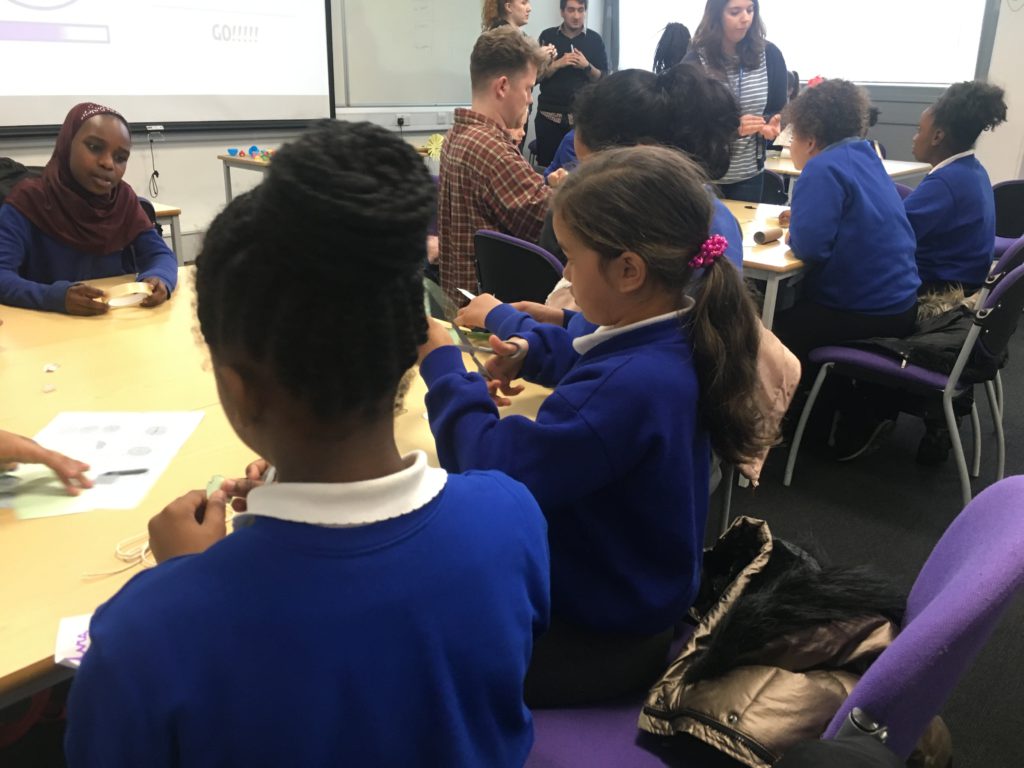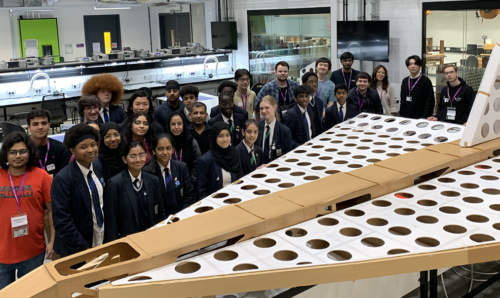Inspiring the future women of STEM
Departments Social responsibility 2nd May 2018
Science and engineering is all about coming up with solutions to the great mysteries and challenges of our age. But one of these challenges is proving hard to overcome, and that’s how to encourage more girls to choose a career in these subjects.
When children are very young and first begin learning about the world around them, there is very little difference between the genders in how they react to science. What five-year-old isn’t wowed by watching a bottle rocket take off, seeing a homemade volcano erupt when you add baking soda and vinegar, or riding in a soapbox car you built together? These are experiments that excite and challenge both girls and boys.
However, between the ages of 10 and 11, something happens. While boys continue to excel at science and engineering and, often, to pursue the subjects into higher education, girls retreat. In fact, many educators say it’s as though the representation and engagement of girls in the science class “drop off a cliff” between Years 5 and 6.
The leaky pipeline

This is the start of what many people working in this area refer to as the ‘leak’ in the STEM (science, technology, engineering and maths) pipeline. If the start of the pipeline is the number of students who choose to study a STEM subject at A-level, the leaks refer to every person who drops out as they journey through it.
Unfortunately, women are far more likely than men to enrol in a STEM subject but ‘leak out’ or switch to something else before they find employment. And the leak only continues once graduates have started down their career path.
A great deal of effort has been made to raise awareness of this worrying trend and to attract more girls to – and retain them on – science and engineering courses in higher education. However, as we’ve already mentioned, it’s a problem that starts far earlier.
Bring Your Daughter to Work

Last week marked Bring Your Daughter To Work Week – part of the WISE campaign for gender balance in science, technology and engineering. Three of our Schools got involved, with academics and PSS from the School of Physics, the School of Materials and the School of Mechanical, Aerospace and Civil Engineering bringing their daughters to work with them to find out more about what scientists and engineers at The University of Manchester get up to.
Daughters from the School of Physics and the School of Materials were both present at the event, along with Year 5 and 6 pupils from a local school. Their teacher revealed that the girls had been excited about the event “for weeks”, and that they were really engaged in the activities.
That wasn’t really a surprise, given the activities on offer. The amateur scientists were first tasked with becoming Charles Darwin and examining replica dinosaur fossils to look for signs of how the creatures adapted to their environment. In particular, they considered how they would eat, hunt and defend themselves.
There were plenty of chances to ask questions. One organiser noted that many of the girls often struggled with confidence and so were less likely to ask a question or put forward an answer when there were boys in their class. Not only did they ask our dinosaur expert from the School of Earth and Environmental Sciences plenty of questions, but they also shared their own knowledge. In fact, one girl revealed that T-Rex was unlikely to have roared in the way depicted in Jurassic Park, with our academic agreeing that this was because the closest living relatives of the dinosaurs were birds, which aren’t known for roaring.
From big birds to angry birds

Birds were also the theme of the engineering challenge. Taking inspiration from the game Angry Birds, the School of Mechanical, Aerospace and Civil Engineering tasked the girls with building a wind turbine from paper that could lift their eggs to safety. After this, they tried their hand at building canons to shoot at those dastardly Bad Piggies and prevent them from stealing the eggs.
Both tasks were designed to be fun and allow the girls to experiment and come up with a range of solutions to a challenge. And at its heart, that is what defines science and engineering – it’s trial and error, and you may go down a lot of dead ends before you come up with a solution that works.
School-age girls are known to lag behind boys when it comes to self-confidence, and are therefore more worried about the possibility of getting something wrong – in public especially. Because of this, they are outperformed by the boys in science and engineering – in spite of girls outperforming boys overall in UK schools.
New heroes
After the challenges, the girls were invited to meet some of our inspiring scientists and engineers and find out more about their work. A perception among girls that science and engineering “isn’t for them” may well be fuelled by the seeming lack of female role models in this area.
Well we have a feeling the panel of amazing physicists, material scientists and engineers they heard from will have given these girls the role models they were looking for. As we previously reported, gender stereotypes and the use of ‘male’ and ‘female’ labels can have a profound effect on children at an age when they’re working out their own identity and how they fit into the world around them.
With fewer female than male role models within the fields of science and engineering, girls may find it difficult to visualise themselves in these roles. This helps explain why research from the Institute of Physics found that, when asked what their aspirations were, Year 7 boys listed professions like ‘doctor’, ‘engineer’ and ‘technician’, while girls aspired to career choices like ‘modelling’, ‘makeup’ and ‘teaching’. It’s also worth noting that there was far more variation in the boys’ answers.
The science and engineering communities can only benefit from more keen thinkers passionate to put forward their own solutions to great challenges. And the more diverse this community is, the more it benefits. Here’s hoping that events like Bring Your Daughter to Work Week will continue to encourage and inspire the future women of STEM.
Words and images – Hayley Cox
Bring Your Daughter to WorkEarth and Environmental SciencesEarth SciencesengineeringMACEMaterialsMaterials Science and TextilesMechanical Aerospace and Civil EngineeringPhysicsPhysics and AstronomyscienceSTEM




